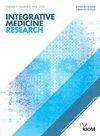药物穿刺联合针刀治疗退行性腰椎管狭窄的有效性和安全性:一项实用、评估盲、随机、对照试验
IF 3
4区 医学
Q2 INTEGRATIVE & COMPLEMENTARY MEDICINE
引用次数: 0
摘要
在韩国医学的临床实践中,药物穿刺疗法和针刀(PA)正越来越多地被探索作为退行性腰椎管狭窄症(LSS)的潜在治疗选择。在本研究中,我们旨在评估PA联合传统韩药治疗(CKMT)治疗退行性LSS患者的有效性和安全性。方法对104例年龄40 ~ 75岁的退行性LSS患者进行了一项实用、评估盲、随机对照试验。参与者在6周的时间内被随机分配到CKMT+PA组或CKMT单独组。主要结局是疼痛/不适的视觉模拟评分(VAS)的平均变化。次要结局包括临床重要差异(CID)、苏黎世跛行问卷、自述最大步行距离、Roland-Morris残疾问卷、EuroQol 5维5级问卷、患者整体印象变化。每次就诊时对不良事件(ae)进行评估。结果与CKMT组相比,CKMT+PA组在6周时VAS评分有显著改善(调整平均差值:20.26;95%可信区间:13.79-26.72,p < 0.0001), CKMT+PA组中更高比例的患者在疼痛减轻方面达到最小CID。这些改善持续到第10周和第14周。与CKMT组相比,CKMT+PA组在所有时间点的次要结果也优于CKMT组。CKMT未显示不良事件,而1.7%的蜂毒组和2.2%的针刀组出现轻度不良事件。结论与单纯CKMT治疗相比,CKMT+PA治疗可显著改善退行性LSS患者的疼痛缓解、功能能力和生活质量。临床研究信息服务(CRIS)注册,KCT0008557。本文章由计算机程序翻译,如有差异,请以英文原文为准。
Effectiveness and safety of combining pharmacopuncture therapy and acupotomy for treating patients with degenerative lumbar spinal stenosis: A pragmatic, assessor-blinded, randomized, controlled trial
Background
In the clinical practice of Korean Medicine, pharmacopuncture therapy and acupotomy (PA) are being increasingly explored as potential treatment options for degenerative lumbar spinal stenosis (LSS). In this study, we aimed to evaluate the effectiveness and safety of combining PA with conventional Korean Medicine treatment (CKMT) in patients with degenerative LSS.
Methods
A pragmatic, assessor-blinded, randomized controlled trial was conducted with 104 participants aged 40–75 years diagnosed with degenerative LSS. The participants were randomly assigned to either the CKMT+PA or CKMT alone groups over a 6-week period. The primary outcome was the mean change in the visual analog scale (VAS) for pain/discomfort. Secondary outcomes included clinically important differences (CID), Zurich Claudication Questionnaire, self-reported maximum walking distance, Roland-Morris Disability Questionnaire, EuroQol 5-dimension 5-level questionnaire, and patients’ global impression of change. The adverse events (AEs) were assessed at each visit.
Results
The CKMT+PA group showed significant improvements in VAS scores compared to the CKMT group at 6 weeks (adjusted mean difference: 20.26; 95 % confidence interval: 13.79–26.72, p < 0.0001), and a higher proportion of patients in the CKMT+PA group achieved the minimal CID in pain reduction. These improvements persisted at weeks 10 and 14. Superior results were also observed with respect to secondary outcomes in the CKMT+PA group compared to the CKMT group across all time points. CKMT showed no AEs, while mild AEs occurred in 1.7 % of bee venom and 2.2 % of acupotomy sessions.
Conclusion
Compared to CKMT alone, CKMT+PA offers significant improvements in pain relief, functional capacity, and quality of life in patients with degenerative LSS.
Trial registration
Clinical Research Information Service (CRIS) registry, KCT0008557.
求助全文
通过发布文献求助,成功后即可免费获取论文全文。
去求助
来源期刊

Integrative Medicine Research
Medicine-Complementary and Alternative Medicine
CiteScore
6.50
自引率
2.90%
发文量
65
审稿时长
12 weeks
期刊介绍:
Integrative Medicine Research (IMR) is a quarterly, peer-reviewed journal focused on scientific research for integrative medicine including traditional medicine (emphasis on acupuncture and herbal medicine), complementary and alternative medicine, and systems medicine. The journal includes papers on basic research, clinical research, methodology, theory, computational analysis and modelling, topical reviews, medical history, education and policy based on physiology, pathology, diagnosis and the systems approach in the field of integrative medicine.
 求助内容:
求助内容: 应助结果提醒方式:
应助结果提醒方式:


